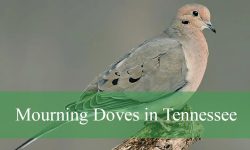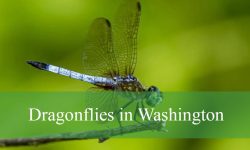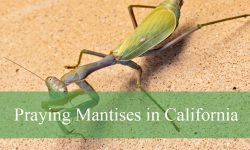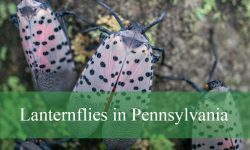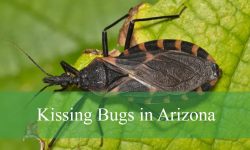West Virginia’s forests are home to a variety of woodpeckers that bring sound and movement to the trees year-round. These birds are known for their drumming behavior, unique calls, and vital ecological roles, such as controlling insect populations and creating nesting cavities for other wildlife. Their presence is a clear sign of a healthy, diverse woodland environment.
The diversity of woodpeckers in West Virginia ranges from widespread species like the Downy Woodpecker to more elusive ones such as the Black-backed Woodpecker. Each species thrives in different habitats, from suburban backyards and deciduous forests to high-elevation spruce stands and fire-damaged areas. Some are year-round residents, while others are more seasonal or irregular visitors.
This guide to 8 woodpeckers in West Virginia provides detailed identification tips, habitat preferences, and behavior patterns to help birdwatchers and nature lovers recognize each species. Exploring the state’s trails, woodlands, or even your own backyard can offer opportunities to observe these fascinating birds up close.
Common Woodpeckers Found in West Virginia
Downy Woodpecker (Dryobates pubescens)
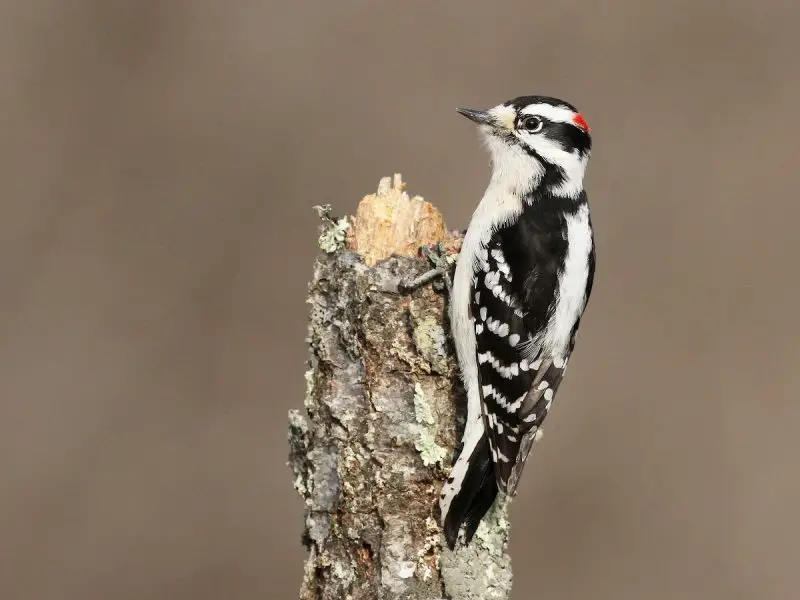
The Downy Woodpecker is the smallest woodpecker in North America, measuring around 5.5 to 6.7 inches in length with a wingspan of approximately 10 to 12 inches. It has a compact body with a short, chisel-like bill, black-and-white patterned wings, and a white underside. Males can be identified by the small red patch on the back of the head, while females lack this marking. Despite its small size, the Downy Woodpecker is an energetic and resourceful bird, often seen climbing tree trunks or darting through twigs and branches.
This woodpecker is highly adaptable and can be found in a variety of habitats, including deciduous woodlands, mixed forests, orchards, parks, and suburban yards. In West Virginia, it is widespread and commonly visits backyard feeders, particularly those offering suet, peanuts, or sunflower seeds. It prefers areas with mature trees and sufficient deadwood, which provide nesting and foraging opportunities.
Behaviorally, Downy Woodpeckers are agile and acrobatic foragers. They often feed by probing bark for insects, larvae, and spiders, and they will also eat plant material such as berries and seeds. Their drumming, which is a form of communication and territory marking, is rapid and light compared to larger woodpeckers. They frequently hang upside down on small branches or twigs while feeding—behavior that further distinguishes them from similar species.
In West Virginia, the Downy Woodpecker is a year-round resident and one of the most familiar woodpeckers to birdwatchers. It nests in tree cavities, often excavated in soft or decaying wood. During winter, these woodpeckers may join mixed-species foraging flocks that include nuthatches, chickadees, and titmice. Their cheerful presence and tolerance of human proximity make them a welcome sight in many parts of the state.
Hairy Woodpecker (Leuconotopicus villosus)

The Hairy Woodpecker closely resembles the Downy Woodpecker but is noticeably larger, measuring 7 to 10 inches long with a wingspan of about 13 to 16 inches. It features similar black-and-white plumage and a long, sturdy bill that is nearly the length of its head—an important field mark that helps differentiate it from its smaller cousin. Males sport a red patch on the rear crown, while females do not. Its sharp, bold markings and clean white underparts make it a striking bird to observe in the field.
This species favors mature forests with large trees and a good amount of dead wood, where it forages for insects by chiseling into bark and wood. In West Virginia, the Hairy Woodpecker can be found throughout the state, particularly in state parks, forest preserves, and rural woodlands. It is less commonly seen in suburban neighborhoods than the Downy, but it will still visit feeders—especially those offering suet in colder months.
Hairy Woodpeckers are solitary and deliberate in their movements. Their foraging involves deep, rhythmic tapping as they dig for insects like beetle larvae and ants beneath tree bark. They are known to follow sapsuckers to feed on flowing sap or insects attracted to sap wells. Their call is a sharp, whinny-like “peek,” and their drumming is louder and more forceful than that of the Downy Woodpecker.
Year-round residents in West Virginia, Hairy Woodpeckers nest in tree cavities and prefer secluded forest habitats for breeding. While not as commonly observed as the Downy, they are an essential part of the region’s woodland bird community. Their presence is often an indicator of healthy forest ecosystems, and their specialized feeding habits help control insect populations within their territories.
Northern Flicker (Colaptes auratus)
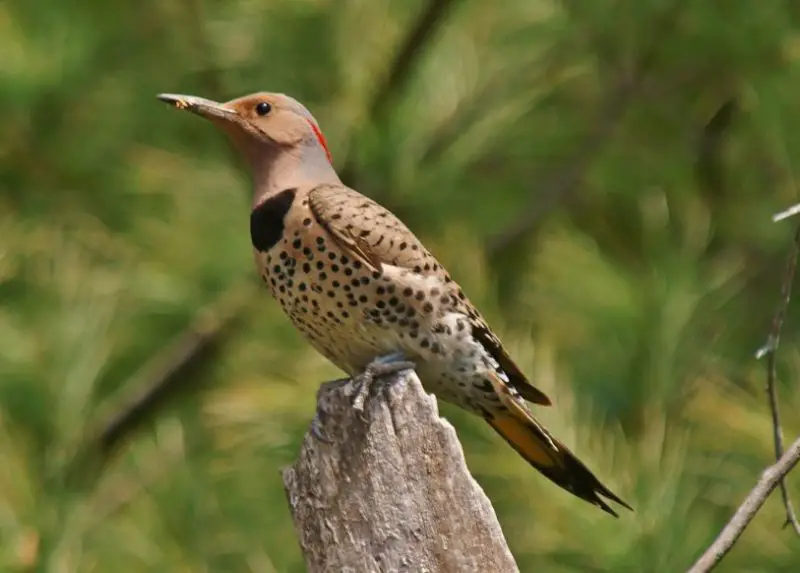
The Northern Flicker is one of the most distinctive and colorful woodpeckers in North America, with a body length of 11 to 14 inches and a wingspan ranging from 16 to 21 inches. Unlike many woodpeckers, its plumage is mostly brown with black spots on the belly, a black crescent on the chest, and a white rump visible in flight. In West Virginia, the “Yellow-shafted” form is common, featuring yellow underwings and a bright red patch on the back of the head in males.
Northern Flickers are unique among woodpeckers in that they often forage on the ground, especially in open areas where ants—their favorite food—are abundant. You’ll find them in open woodlands, forest edges, meadows, and suburban lawns. They frequently use their slightly curved bill to dig into soil or leaf litter in search of insects, although they also consume fruits and seeds in the fall and winter.
Behaviorally, Northern Flickers are known for their loud, ringing calls and undulating flight patterns. Their “wick-a-wick-a-wick” call is a common sound in West Virginia woodlands and parks. During the breeding season, males engage in elaborate displays that include head bobbing and drumming on hollow trees or even metal surfaces. They nest in tree cavities and will also use nest boxes if available.
Northern Flickers are permanent residents in much of West Virginia, although some individuals may migrate southward in harsh winters. Their preference for open habitats and tendency to forage on the ground makes them more conspicuous than other woodpeckers. Despite being somewhat less common at feeders, they are regularly seen in yards with scattered trees and short grass, especially during early morning hours.
Yellow-bellied Sapsucker (Sphyrapicus varius)

The Yellow-bellied Sapsucker is a medium-sized woodpecker measuring about 7 to 8.5 inches long, with a wingspan of 13 to 16 inches. It has a black-and-white striped face, a white wing patch, and a pale yellow belly. Adult males are distinguished by a red forehead and red throat, while females have a red forehead and white throat. The pattern of bold stripes and spots, along with its unique feeding signs on trees, makes it relatively easy to identify once observed.
This species is a seasonal visitor to West Virginia, typically arriving in the spring and departing in the fall. It breeds in the northern and higher-elevation forests of the state, particularly in the Allegheny Mountains and mature hardwood stands. Yellow-bellied Sapsuckers prefer mixed woodlands, especially areas with birch, maple, and aspen trees, which are ideal for sap extraction.
The hallmark behavior of this woodpecker is its drilling of neat, horizontal rows of holes in tree bark to access sap. The bird returns repeatedly to these “sap wells” to feed on the sap and any insects attracted to it. Though this behavior can occasionally damage trees, it also creates feeding opportunities for other birds like hummingbirds and warblers. Sapsuckers also eat insects, fruits, and berries, especially later in the season.
In West Virginia, Yellow-bellied Sapsuckers are considered uncommon in the lowlands but more frequently encountered in higher elevations during breeding season. They may be seen during migration across the state in forested parks and wooded backyards. Their irregular drumming, distinctive feeding holes, and striking plumage make them a fascinating woodpecker species to observe when they are present.
Pileated Woodpecker (Dryocopus pileatus)

The Pileated Woodpecker is the largest woodpecker species in West Virginia and one of the most iconic woodland birds in North America. It measures around 16 to 19 inches in length with a wingspan that can reach up to 30 inches. Its plumage is mostly black with striking white stripes down the neck and a vivid red crest on top of the head. Males can be distinguished from females by the presence of a red stripe extending from the bill to the throat. With its powerful appearance and dramatic flight, this bird often leaves a lasting impression on observers.
Pileated Woodpeckers inhabit large tracts of mature forest, especially hardwood forests and mixed woodlands with abundant dead trees or logs. In West Virginia, they are widespread and can be found throughout the state, especially in state parks, wildlife refuges, and remote wooded hillsides. They prefer undisturbed forests with ample deadwood for excavation and foraging.
These woodpeckers use their strong bills to carve deep rectangular holes into trees while searching for carpenter ants, their primary food source. They will also consume beetles, larvae, fruits, and nuts. Their loud, echoing call—a high-pitched “kuk-kuk-kuk”—along with powerful drumming sounds, helps define their territory and attract mates. Their excavation work plays an important ecological role by creating nesting and roosting cavities used by many other animals.
Year-round residents in West Virginia, Pileated Woodpeckers typically nest in dead trees or snags, where they carve large oval-shaped holes. They are more often heard than seen due to their shy nature and preference for deep woods, but their distinctive markings and characteristic rectangular foraging holes offer clear signs of their presence. Their adaptability to suburban forest edges has made them increasingly visible in recent years.
Red-bellied Woodpecker (Melanerpes carolinus)
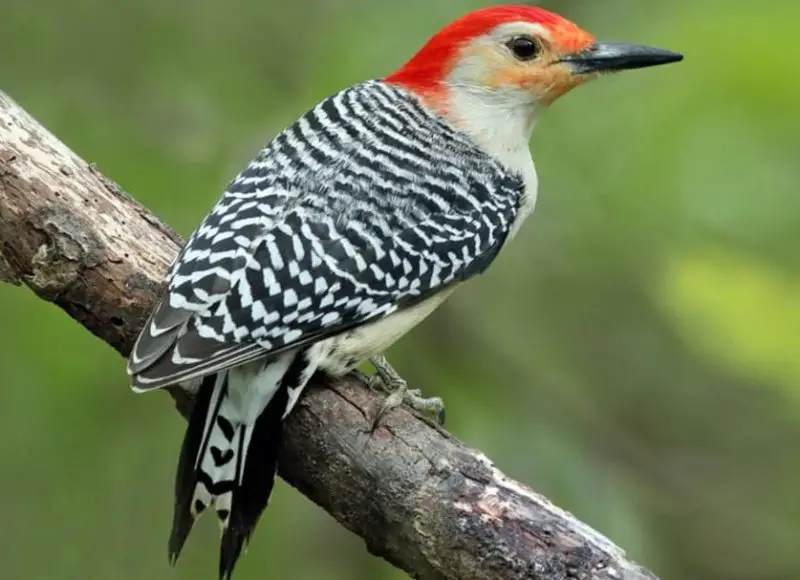
The Red-bellied Woodpecker is a medium-sized species, measuring about 9 to 10.5 inches long with a wingspan of 13 to 17 inches. It has a pale, slightly rosy belly (which is often hard to see), black-and-white barred wings and back, and a striking red cap that extends from the bill to the nape in males and only from the crown to the nape in females. Despite its name, the red on its belly is faint and often overlooked; the head coloration is the more distinctive feature.
This woodpecker is highly adaptable and common in West Virginia’s woodlands, parks, suburban areas, and even urban neighborhoods with large trees. It thrives in deciduous forests, forest edges, and open woodlands. In residential areas, it frequently visits feeders for suet, sunflower seeds, and nuts, making it a familiar sight to many backyard birdwatchers.
Red-bellied Woodpeckers are vocal and active foragers, often climbing tree trunks and branches while searching for insects, seeds, nuts, and fruit. They also store food in tree crevices during fall and winter. Their rolling “churr” calls and loud drumming are common sounds in the forest. They use their long, barbed tongue to extract insects from bark or hidden crevices, and will also catch flying insects in midair.
They are year-round residents in West Virginia and nest in dead trees or limbs, often excavating a new cavity each year. Both parents help incubate the eggs and feed the young. Because of their adaptability and bold nature, Red-bellied Woodpeckers have expanded their range over the past several decades and are now one of the most commonly observed woodpeckers in the state.
Red-headed Woodpecker (Melanerpes erythrocephalus)
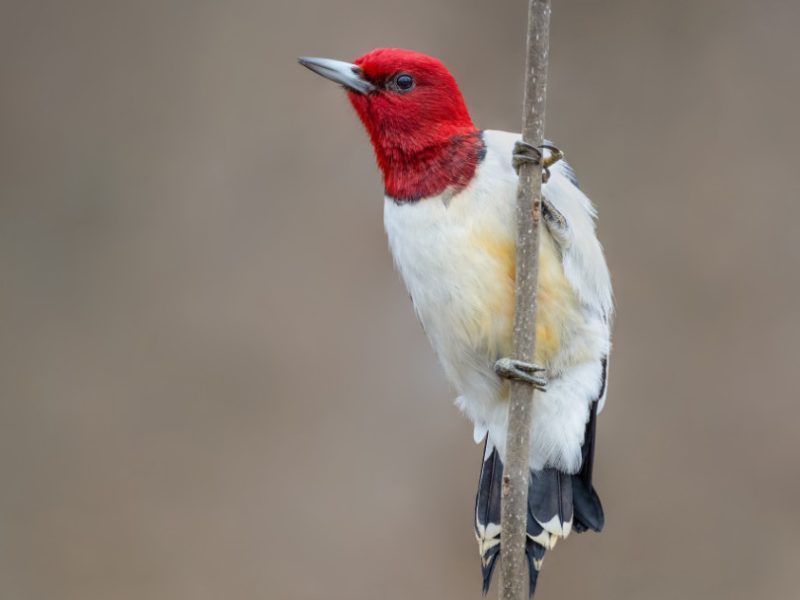
The Red-headed Woodpecker is one of the most striking woodpeckers in North America due to its vivid coloration and bold contrasts. It measures 7.5 to 9.1 inches in length with a wingspan of around 16 to 17 inches. Adults have an entirely crimson-red head, neck, and throat, with a white underside and black back that contrasts sharply with large white wing patches visible in flight. Juveniles are duller with a gray-brown head until they mature.
This species prefers open woodlands, savannas, and forest edges, particularly those with standing dead trees or scattered snags. In West Virginia, Red-headed Woodpeckers are more localized and less common than other species. They are typically found in open pine stands, riparian corridors, old orchards, and rural pastures with scattered trees. Their presence often coincides with areas that have both open ground and vertical perches.
Red-headed Woodpeckers are unique among woodpeckers for their highly active and versatile feeding behavior. In addition to excavating for insects, they will catch insects in flight, forage on the ground, and store food in tree bark or cavities for later use. They consume a wide variety of foods, including acorns, beech nuts, berries, and even small vertebrates. Their loud “queer” calls and deliberate drumming make them easy to identify when nearby.
In West Virginia, they are most often seen during the warmer months, although some individuals may remain year-round in southern or lowland areas. Habitat loss and competition for nesting sites have caused population declines in parts of their range. However, where suitable habitat is maintained, they can be stable or even abundant. Their vivid appearance and dynamic behavior make them a favorite among birders lucky enough to spot them.
Black-backed Woodpecker (Picoides arcticus)
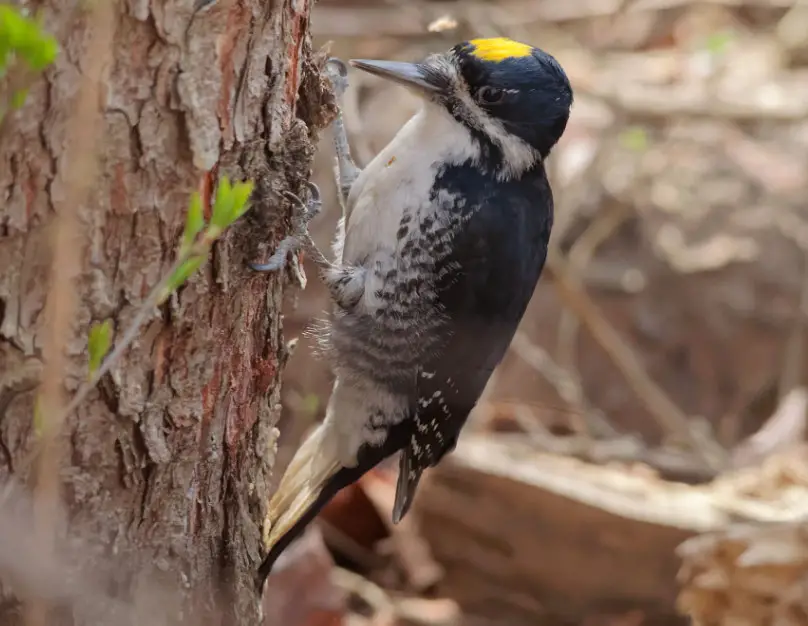
The Black-backed Woodpecker is a medium-sized woodpecker, measuring about 9 inches in length with a wingspan of 15 to 16 inches. It is instantly recognizable by its sooty black back, wings, and head, which contrast with white underparts and flanks that are often streaked with dark barring. Males have a bright yellow patch on the crown, while females lack this marking. Unlike most other woodpeckers, this species has only three toes instead of four, which helps it cling to charred tree trunks.
This woodpecker is a specialist of boreal and montane coniferous forests, particularly in areas affected by wildfire or insect outbreaks. In West Virginia, the Black-backed Woodpecker is considered a rare and irregular visitor, primarily reported from high-elevation spruce forests in the Allegheny Mountains. Its presence is usually linked to recent burns or beetle-infested stands where dead or dying trees are abundant.
Behaviorally, Black-backed Woodpeckers are quiet and deliberate foragers. They excel at flaking bark from dead conifers to find wood-boring beetle larvae—their primary food source. Their ability to exploit freshly burned forests gives them an ecological niche that few other woodpeckers can fill. They often go unnoticed due to their silent demeanor and the dark coloration that helps them blend in with charred bark.
Although not a regular resident of West Virginia, the Black-backed Woodpecker may be found sporadically in the state’s higher elevations, especially following forest fires or significant insect damage. Birders hoping to spot one should focus on remote spruce or pine stands in places like the Monongahela National Forest. Because it depends so heavily on specific forest conditions, this woodpecker serves as an important indicator species for the health and regeneration of fire-affected conifer ecosystems.

